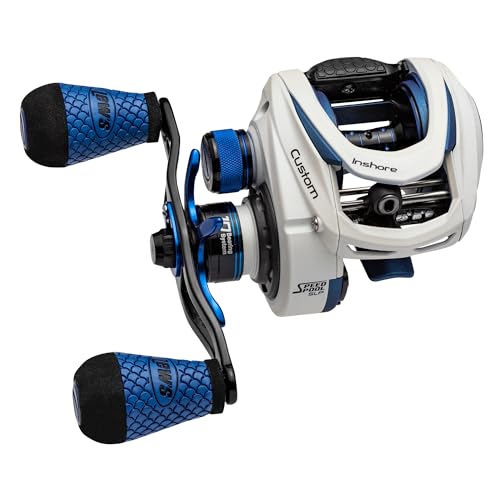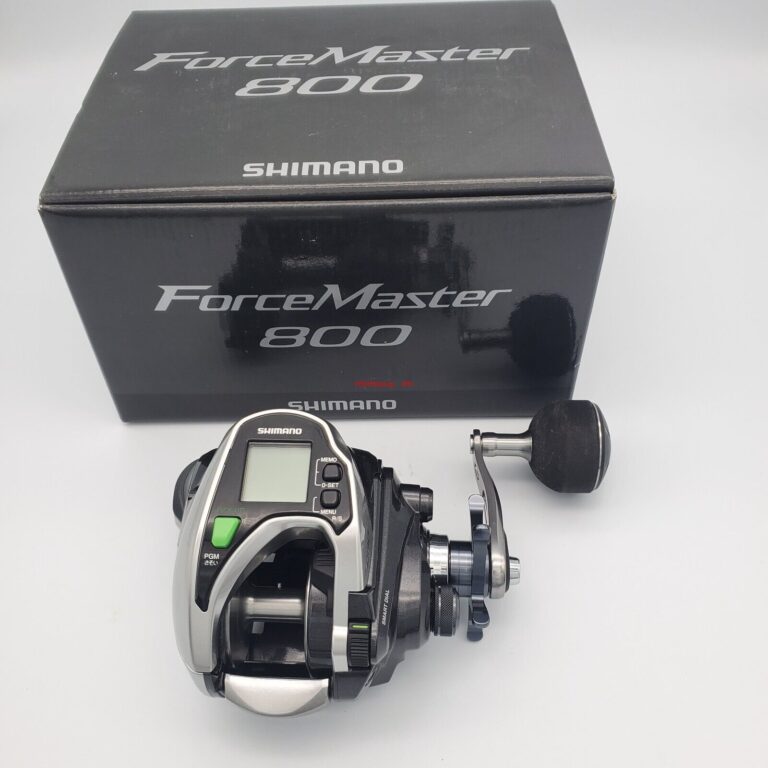To cast with a baitcasting reel without backlash, adjust the spool tension and braking system to match the bait weight and casting distance. Additionally, use a smooth and controlled casting motion, keeping your thumb lightly on the spool to control the speed.

Credit: www.youtube.com
Understanding Baitcasting Reel Backlash
What Is Baitcasting Reel Backlash?
When it comes to using a baitcasting reel, one common issue that anglers often encounter is backlash. Backlash occurs when the spool of the reel continues to rotate after the fishing line has stopped, resulting in a tangled mess. This can be frustrating and time-consuming to fix, not to mention it can also affect your fishing performance.
Understanding the causes and impact of backlash is essential for any angler looking to improve their casting technique.
The Causes Of Baitcasting Reel Backlash:
Backlash can be caused by several factors, including:
- Improper spool tension: If the spool tension is set too loose, the line will continue to unwind even after the bait has hit the water, resulting in backlash. On the other hand, if the spool tension is set too tight, it can restrict the line from flowing smoothly, which may also lead to backlash.
- Incorrect braking system settings: Many baitcasting reels come with adjustable braking systems to help control the rotation of the spool. If the braking system is not properly set or adjusted, it can contribute to backlash.
- Casting with too much force: Casting with excessive force can cause the spool to rotate faster than the line can keep up, resulting in backlash. It is important to find the right balance and avoid overpowering your cast.
The Impact Of Backlash On Fishing Performance:
Backlash can have a significant impact on your fishing performance in several ways:
- Line damage: When backlash occurs, the fishing line can become tangled and damaged, making it less effective and more prone to breaking. This can result in lost fish and frustration.
- Time-consuming: Untangling backlash can take up valuable fishing time, reducing the amount of time you have to actually fish. It can be frustrating and tedious, especially if it happens frequently during your fishing trip.
- Reduced casting accuracy: Backlash can also affect your casting accuracy. When you have to constantly worry about backlash, it can prevent you from casting with confidence and precision, affecting your ability to accurately place your bait where the fish are.
Understanding baitcasting reel backlash is crucial for any angler using this type of reel. By knowing the causes and impact of backlash, you can take steps to prevent it from occurring and improve your overall fishing performance. So, make sure to set the spool tension correctly, adjust the braking system if necessary, and avoid casting with excessive force.
With practice and proper technique, you can minimize backlash and enjoy a more productive and enjoyable fishing experience.
Mastering The Basics Of Baitcasting
Baitcasting reels are a popular choice for many anglers due to their versatility and accuracy when casting. However, they can be a bit tricky to use, especially if you’re new to the world of baitcasting. In this section, we will walk you through the essential basics you need to know to cast with a baitcasting reel without experiencing dreaded backlash.
Choosing The Right Baitcasting Reel For Your Needs
When it comes to choosing the right baitcasting reel, there are a few factors to consider. Here are the key points you should keep in mind:
- Determine your fishing style: Different baitcasting reels are designed for various fishing techniques, such as freshwater or saltwater fishing, heavy-duty fishing, or finesse fishing. Understanding your fishing style will help you select a reel that suits your needs.
- Consider the gear ratio: The gear ratio determines the number of times the spool rotates with one turn of the handle. Higher gear ratios, such as 7.0:1 or 8.0:1, provide faster line retrieve, while lower gear ratios, like 5.4:1 or 6.4:1, offer more torque for pulling in larger fish.
- Check the braking system: Baitcasting reels come with different braking systems, like magnetic or centrifugal brakes. These systems help control the spool during the casting process, preventing backlash. Choose a reel with a braking system that matches your casting style and skill level.
Properly Setting Up Your Baitcasting Reel
Before you start casting, it’s crucial to set up your baitcasting reel correctly. Follow these steps for a smooth and hassle-free fishing experience:
- Adjust the spool tension: The spool tension knob is located on the side of the reel and controls the speed at which the spool spins. Start by tightening the knob until the lure starts to drop slowly when the rod tip is pointed downwards. Gradually loosen or tighten the tension as needed to achieve optimal casting performance.
- Fine-tune the braking system: Use the braking system adjustment knobs to fine-tune the reel’s braking force. Begin with a higher setting to minimize the risk of backlash, especially if you’re new to baitcasting. As you gain more experience, gradually decrease the brake setting to maximize casting distance.
- Thumb control is key: To prevent backlash, it’s crucial to use your thumb to control the spool’s rotation during the casting process. Practice feathering the spool with your thumb by applying slight pressure to the line to slow down the spool when the lure approaches the target.
Understanding The Different Components Of A Baitcasting Reel
To become a baitcasting pro, it’s essential to familiarize yourself with the different components of your reel. Here’s a breakdown of those key components:
- Spool: The spool is where the fishing line is stored. It rotates during casting and retrieves the line when reeling in fish.
- Handle: The handle is used to turn the gears and retrieve the line. It should be ergonomically designed for comfortable use over extended periods.
- Drag system: The drag system applies consistent pressure on the line, allowing you to control the amount of resistance applied when a fish pulls on the line.
- Line guide: The line guide directs the line onto the spool while casting and helps in achieving accurate and controlled casting distances.
- Braking system: The braking system, as mentioned earlier, controls the spool’s rotation speed during casting to prevent backlash. It can be adjusted to suit different casting needs.
By understanding these components and following the basics of baitcasting, you’ll be well on your way to mastering the art of casting with a baitcasting reel without encountering backlash. Remember, practice makes perfect! So, grab your reel, head to the water, and gradually work on your technique until you become a baitcasting expert.
Expert Tips For Preventing Baitcasting Reel Backlash
Casting with a baitcasting reel can be a bit tricky, especially when it comes to preventing backlash. But fear not, as we have some expert tips to help you cast smoothly and avoid those frustrating tangles. Whether you’re a beginner or experienced angler, these tips will surely improve your baitcasting game.
Adjusting The Spool Tension Knob For Smooth Casting
- Start by gripping the fishing rod and reel properly, ensuring a comfortable and secure hold.
- Locate the spool tension knob on the side of the reel and adjust it according to the weight of your lure.
- A good rule of thumb is to tighten the tension knob until the lure slows down as it drops, then gradually loosen it until the lure falls freely.
- Finding the right balance is crucial, as overly tight or loose spool tension can lead to backlash.
Fine-Tuning The Cast Control Settings
- Many modern baitcasting reels come equipped with cast control settings, such as magnetic or centrifugal brakes.
- To prevent backlash, adjust these settings based on the prevailing casting conditions, such as wind and lure weight.
- Start with a moderate setting and make small adjustments until you achieve a smooth and controlled cast.
- Remember, a properly tuned cast control system can significantly reduce the chances of backlash.
Practicing The Thumb Control Technique For Backlash Prevention
- Your thumb plays a critical role in preventing backlash during baitcasting.
- Mastering the thumb control technique takes practice, but it pays off in smooth and accurate casts.
- As your lure sails through the air, lightly rest your thumb on the spool to add just enough pressure to prevent line overruns.
- Release the pressure once your lure hits the water, allowing the spool to spin freely.
- With time and experience, you’ll develop the muscle memory needed to adjust thumb control instinctively.
Using The Right Casting Technique For Different Fishing Scenarios
- Adjust your casting technique based on the fishing scenario you’re facing.
- For shorter and more accurate casts, employ the pitching and flipping technique.
- When distance is your goal, use the overhand cast or side-arm cast to launch your lure further.
- Practice different casting techniques and adapt them to various fishing situations to minimize the risk of backlash.
Maintaining And Cleaning Your Baitcasting Reel For Optimal Performance
- Regular maintenance and cleaning are essential to keep your baitcasting reel functioning smoothly.
- After each fishing trip, inspect your reel for any dirt, debris, or line tangles. Clean them off gently.
- Apply a few drops of reel oil to the main gear and bearings to ensure smooth operation.
- Check for any loose screws or parts and tighten them as necessary.
- By keeping your reel in good shape, you minimize the chances of backlash and extend its lifespan.
Now armed with these expert tips, you’re ready to conquer any baitcasting reel backlash that comes your way. Remember to adjust the spool tension knob, fine-tune the cast control settings, master the thumb control technique, use appropriate casting techniques, and maintain your reel regularly.
Practice makes perfect, so don’t be discouraged if you face a few tangles along the way. Happy casting!
Conclusion
Mastering the art of baitcasting casting without backlash is crucial for any angler. By understanding the proper technique and following the tips mentioned in this blog post, you can significantly reduce the occurrence of backlashes and enjoy a smoother and more successful fishing experience.
Remember to adjust the brake system on your baitcasting reel, utilize thumb control, and practice the pendulum casting motion to minimize the chances of backlash. Additionally, select the right fishing line and use proper lure weight to improve your casting accuracy.
Don’t forget to maintain and clean your reel regularly to ensure its optimal performance. With patience, practice, and these helpful techniques, you’ll be able to cast with a baitcasting reel without backlash like a pro. So, grab your gear, head out to the water, and get ready to reel in your best catches yet!


